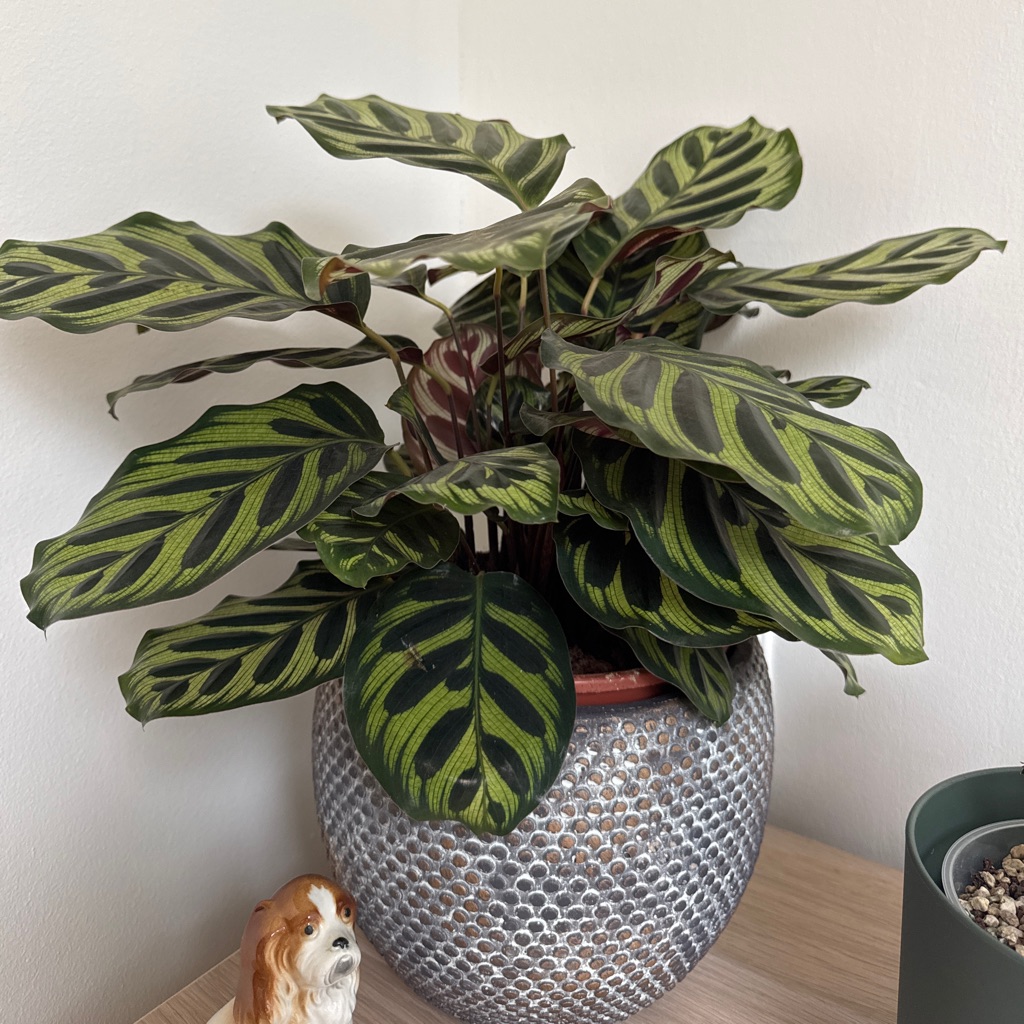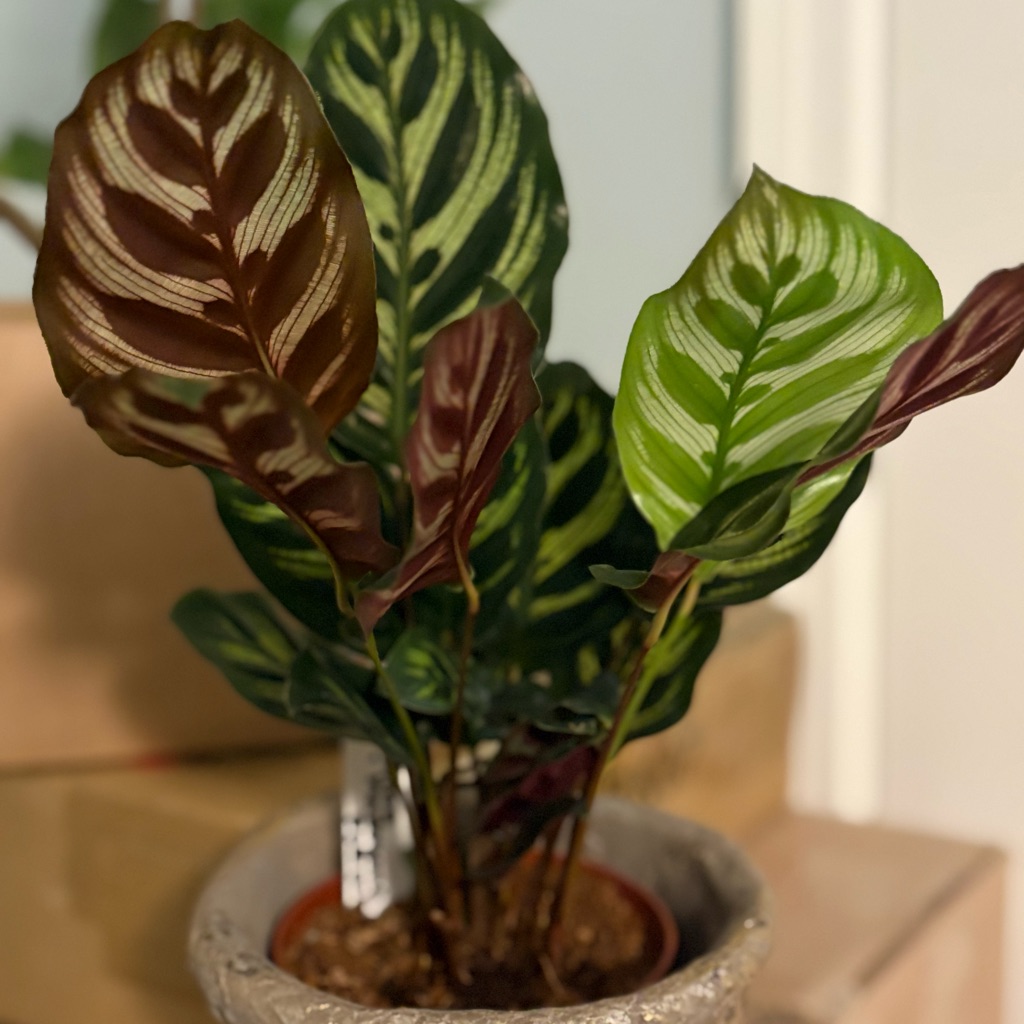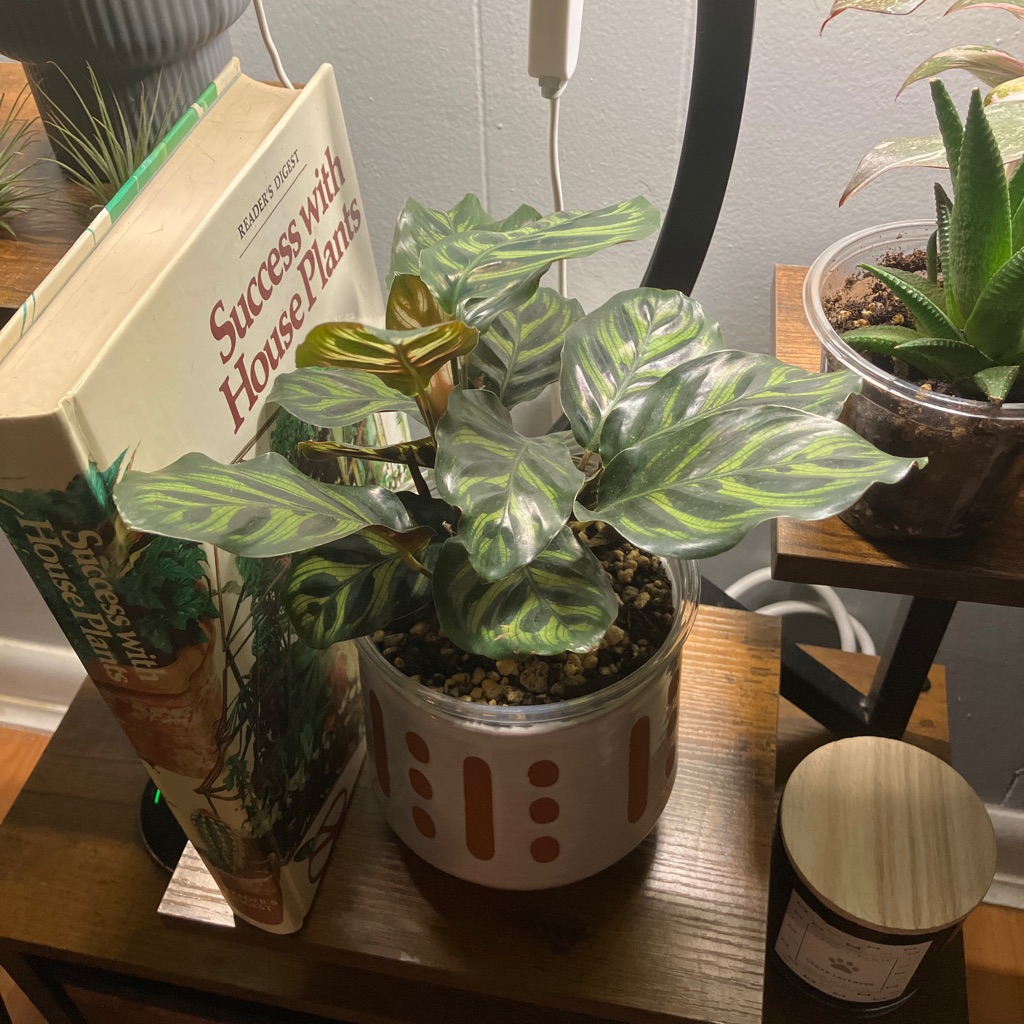How to grow and care for Calathea makoyana E.Morren
plant care guide about watering, fertilizing, trimming, repotting, cutting, propagating Calathea makoyana E.Morren
Calathea makoyana E.Morren 101 - Plant Care Instructions
Bright direct light
18C° ~25C°
Every 7 days
Botany Encyclopedia
Genus : Goeppertia
🔖 Care Tips
Plants are sensitive to environmental changes. It's best to keep their environment consistent, as changes can cause leaves to turn yellow. For beginners, it's safer to buy medium-sized plants rather than small ones, as smaller plants can be more vulnerable to changes. Thin leaves can develop spots if water droplets remain on them for too long, so it's best to wipe them off immediately. Calathea is similar to Maranta. Maranta grows like a vine, while Calathea grows upright, which helps in distinguishing them. Tap water contains fluoride, which isn't ideal for plants if used immediately. Let tap water sit for 1-2 days to allow the fluoride to dissipate before using it.
🏝️ Habitat Conditions
This plant grows under trees in the tropical rainforests of Central and South America. It thrives in warm, humid environments and prefers indirect light over direct sunlight.
🪨 Soil Mix
Since the roots spread shallow and wide, a wide pot is better than a deep one. It's best to plant in well-draining soil. Generally, mix 40% potting soil, 20% bark, 20% leaf mold, 10% perlite, and 10% charcoal. However, the ratio can vary depending on the situation and environment.
🌡️ Environment
Maintain a temperature of 21-25°C, with a minimum of 15°C in winter. Keep humidity between 40-70%, as this plant prefers a humid environment. If it becomes dry, occasionally mist the plant or place a bowl of water nearby to increase humidity. Ensure good air circulation to prevent mold, even if humidity is high.
👀 Characteristics details
During the day, leaves lie flat to receive light, and at night, they stand upright to prevent moisture loss. This movement is a natural response, occurring due to pressure at the junction of leaves and stems. To avoid overlapping leaves, it's best to prune them.
☀️ Light
It is better for houseplants to receive indirect light for extended periods rather than direct sunlight. If the light is too strong or weak, the leaf patterns may fade. Be cautious, as strong light can scorch the leaves.
💧 Water
From spring to fall, water the plant as soon as the surface soil dries. In winter, water when the inner soil dries. Be careful not to get water on the leaves when watering.
🌱 Propagate
In spring, it's common to propagate plants through division while repotting. 1. Remove the plant from the pot and decide how many sections to divide it into. 2. Carefully separate the roots according to your plan. (Be gentle to avoid damaging the roots.) 3. If the roots are tightly tangled, use sterilized scissors to separate them. 4. After dividing, plant each section into appropriate pots.
🪴 Repot
Repotting every 2-3 years is recommended due to its slow growth rate. It is known for severe transplant shock, often causing drooping leaves after repotting. Ideally, repot in spring when the plant is healthy. If transplant shock occurs, place the plant in a shaded area to help the roots settle.
💊 Fertilize
During the growing seasons of spring and summer, it is recommended to use fertilizer 1-2 times a month, adhering to the recommended dosage. Avoid fertilizing immediately after repotting; wait 2-4 weeks before applying fertilizer.
🌺 Flower
Flowers bloom from spring to summer, but they rarely appear indoors. They may bloom if there is enough light and nutrients, similar to their conditions in the wild.
😵 Toxicity
Non-toxic and safe for pets and children.
water
How to water Calathea makoyana E.Morren
How often should I water?
check Calathea makoyana E.Morren Every 7 days if it needs water when it’s very cold (below 5℃), water less frequently
When do I need to water?
the top 2-3 inches of soil is dry
Light & Location
How much light does a Calathea makoyana E.Morren need?

Bright direct light
Bright indirect light
Grow light
Light preference
Calathea makoyana E.Morren likes Bright direct light, Bright indirect light, Grow light day. The brighter the space, the better this plant grows.
Check if there’s an optimal place in your house!
This plant prefers
2K ~ 20K lux to thrive!
0
20K~
2K
20K
Temperature
Houseplants
-15
18~25℃
45
Plants that grow in the wild and those that grow indoors prefer different temperatures. If you grow Calathea makoyana E.Morren at home, make sure the temperature is 18~25℃.
Humidity
Ideal humidity
0
50~70%
100
Calathea makoyana E.Morren prefers humidity about 50~70%. If necessary, increase humidity by misting, humidifier.
Fertilize
💬 Gardener's know-how
Collective Knowhow
When should I fertilize?
Only when your plant is healthy
How frequently should I fertilize?
1-2 times in growing season. A pinch for a small pot.
Characteristic
The taxonomic classification of Calathea makoyana E.Morren is as follows. - Kingdom: Plantae, Phylum: Tracheophyta, Class: Liliopsida, Order: Zingiberales, Family: Marantaceae, Genus: Goeppertia, Species: Calathea makoyana E.Morren
| Characteristic Name | Characteristic Value |
|---|---|
| Habitat | Central South America |
| Taxonomy Name | Taxonomy Value |
|---|---|
| Phylum | Tracheophyta |
| Class | Liliopsida |
| Order | Zingiberales |
| Family | Marantaceae |
| Genus | Goeppertia |
| Species | Calathea makoyana E.Morren |
Is your plant sick?
Track what happened. We’ll let you know the cause and treatment shortly!





1:1 Expert Help
You’ll get professional feedback within 24 hours from an expert on our team.
feedback will include










